Welcome to PureTrip24! For those looking for a unique travel experience packed with history and impressive archaeological sites, you can’t go wrong by visiting the Naga Archaeological Site in Sudan. This ancient relic lies at the core of Nubia and gives insight into life in the Kingdom of Kush. In this ultimate guide, we will provide you with all that is needed to make your Naga visit a memorable one.
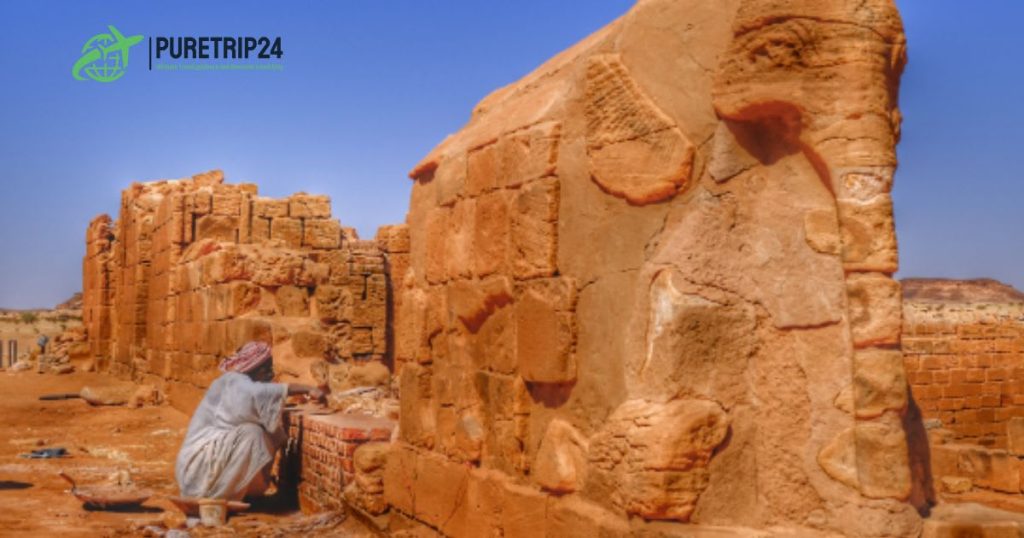
NAGA ARCHAEOLOGICAL SITE OVERVIEW
Situated on the east bank of the Nile River, some 80 kilometers northeast of Khartoum. The site was a major religious and cultural center in the Kingdom of Kushthrough its peak between the 3rd century BC to I AD. Naga is a monument-rich archaeological site, consisting of temples and pyramids with inscriptions which are important for understanding the ancient Nubian civilization.
Why Visit Naga Archaeological Site?
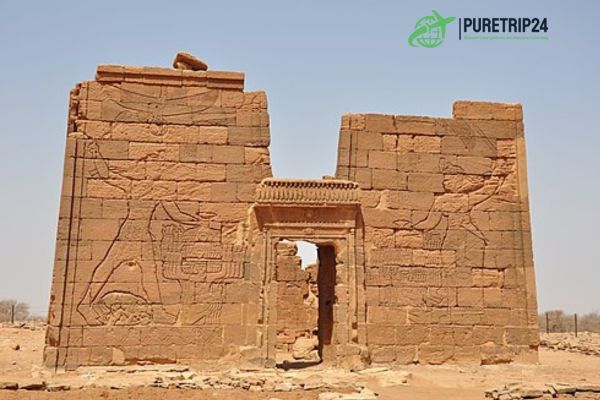
Historical Importance: It was an important Nubian center of cult and culture, which became the capital of the Kushite population. A trip to the site offers a fascinating look into the religion, construction techniques as well as way of life for this powerful culture.
Beautiful Architecture: The temples and pyramids are marvelous architectural gems showcasing a fusion of the Egyptian and Nubian styles.
Rich Artifacts- On the site, there are inscriptions, statues, and relics that tell tales of history which elevate any experience for anyone interested in History.
Cultural Touch: This will allow you to expand your horizon and knowledge of Sudanese culture & traditions.
Getting to Naga Archaeological site
Location and Accessibility
Roads connect to the Naga Archaeological Site, located around 80 km northeast of Khartoum. The journey normally takes 1.5 to two hours by car You can either opt for a cab or rent a vehicle to provide yourself with an easy way out. For logistical assistance and background, a few travel agencies also offer guided tours that include Sudan’s Naga.
Best Time to Visit Naga Archaeological Site
However, November to March is the best month to visit Naga when the temperature is moderate and gives a perfect atmosphere for outdoor activities. The temperatures soar to scorching heat from around April through September and that can make it challenging for exploration, during these months the city should ideally be avoided.
What to See and Do at Naga Archaeological Site
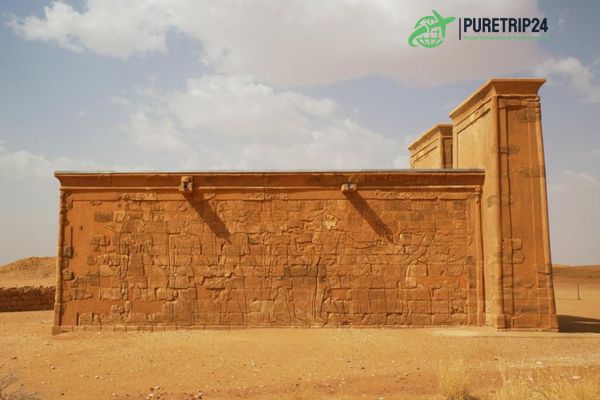
- The Temple of Apedemak
Apedemak: The Lion-headed God of the Kushites— Naga, SudanThese lion statues may have been inspired by this god. Some of the key attractions offered by this grand temple include
Wall Inscriptions: Complex carvings portraying different lifestyles like worship, gods, offerings, etc.
Pillared Hall:The middle hall has a series of columns, features of the construction technology then prevalent.
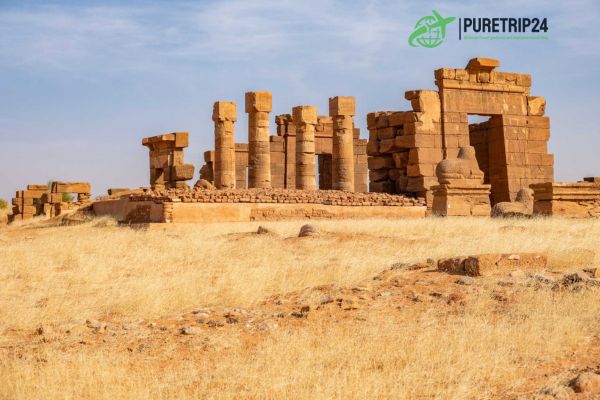
- The Pyramids of Naga
Though much less known than Giza, the pyramids in Naga provide a more peaceful and still engaging experience. Secondly, the Pyramids of Naga are less grand setting aside although I have an even more unusual national size. Explore:
Graves: It houses the burial chambers that shed light on how ancient Kushites were buried and what rituals they followed.
Panoramic Views: Scaling these pyramids provides breathtaking views of the surrounding landscape and Nile River.
- The Lion Temple
Naga also has an interesting Lion Temple which is dedicated to the lion-headed god. Key features include:
A suite of Statues and Tablets: This expansive selection includes statues depicting various Kushite deities, as well as the inscriptions that describe their cultural context.
Chambers of the Temple: Play within each room throughout the activity, playing an essential role during ancient rituals.
- Archaeological Museum
Archaeological Museum nearby Naga Before you go out for exploration. It features:
Artifacts: There are hundreds of artifacts, including pottery and tools that were uncovered in the excavation site to give you a flavor outside what it looks like.
Learning Panels:These are information boards that introduce the artifacts and then explain how to interpret as well as educate on what has been found at the site
Practical Tips for Your Visit Archaeological sites at puretrip24
- What to Pack
Casual Clothing:Dress conservatively and comfortably in light, breezy materials appropriate for hot temperatures. Wear long-sleeved shirts and trousers to protect against the sun.
Walking Shoes:If you are going to be visiting temples and pyramids, good walking shoes will come in handy.
For Sun Protection:Also bring sunscreen, and sunglasses, and don’t forget a big hat to hide under the sunglasses from time to time.
Camera: you will want to take photographs of the beautiful architecture, and landscapes please remember if taking photos of people ask first.
- Safety Precautions
By the group — if possible, always travel with a group or come to guide for added safety and a better understanding of local nuances.
Water Bottle-Drink enough water as it can be very hot here dy.
- Respect Local Customs
Cultural Sensitivity: Respect local customs and traditions. When shooting people (not just your subject) ALWAYS ask permission to take their photographs.
Basic Arabic Phrases: Although plenty of people will speak English as their second language, Learning a couple of basic phrases can improve quality interactions and show some cultural esteem.
Nearby Attractions
If you have the time, pay a visit to these nearby destinations:
- The City of Khartoum
Khartoum — The Sudanese capital, Khartoum offers a host of attractions that you can visit including the city’s impressive National Museum, where ancient artifacts from Meroe times depict this region’s distinct culture and history. It is a catholic town therefore there are few sights, but it has plenty of different cultures and experiences.
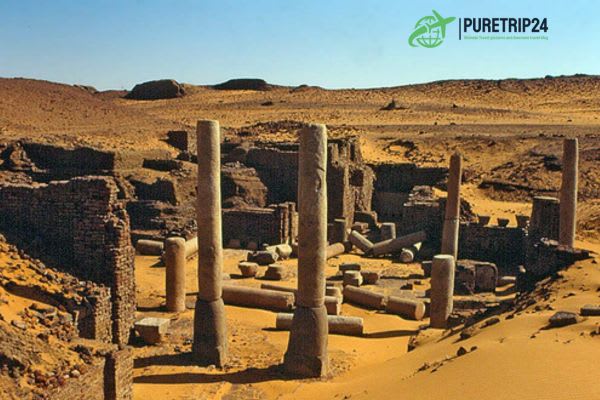
- Old Dongola
Located just a short drive from Naga, Old Dongola is home to numerous ancient ruins and churches that were once exclusive 2 the Makurian Kingdom adding another dimension to your understanding of Nubian history at its strongest here.
- The Nile Valley
It opens with the gorgeous landscapes of the Nile Valley in which hiking, fishing, and bird-watching are all possible. Relax beside the lifeblood of civilizations for thousands of years.
Conclusion
Here, one of the largest and best-preserved sites is at Naga Archaeological Site where history lovers can roam through the ancient Kingdom of Kush up to 1000 BC surrounded by incredible scenery. Each nook-and-corner of Naga City speaks about the legacy it fostered over centuries in the forms of you being awe-struck by magnificent temple complexes to never-seen pyramids.
Hopefully, by reading this guide and thinking ahead to your trip you will be fully prepared to explore the amazing road that is Sudan’s history, an important aspect of its cultural heritage. Stay tuned with PureTrip24 for more travel tips and experiences. com. Safe travels, and good adventure in Naga!!
